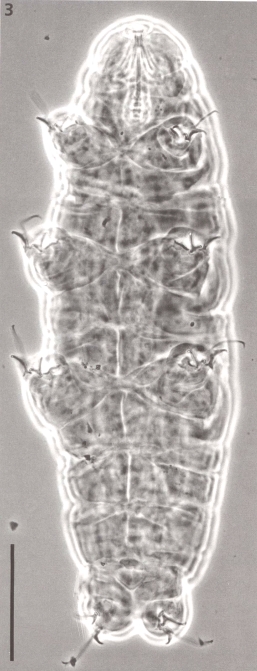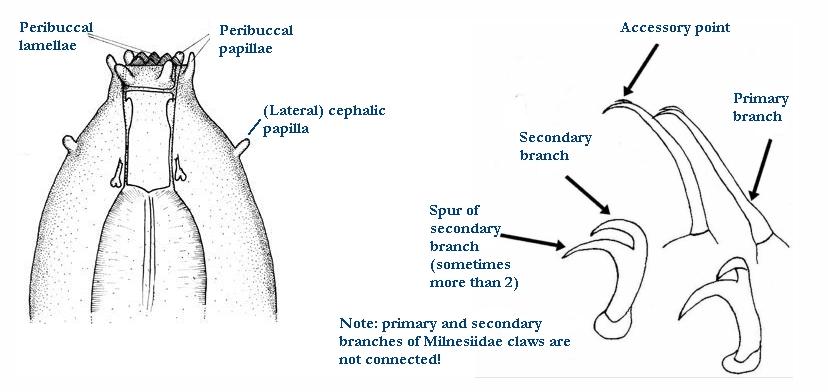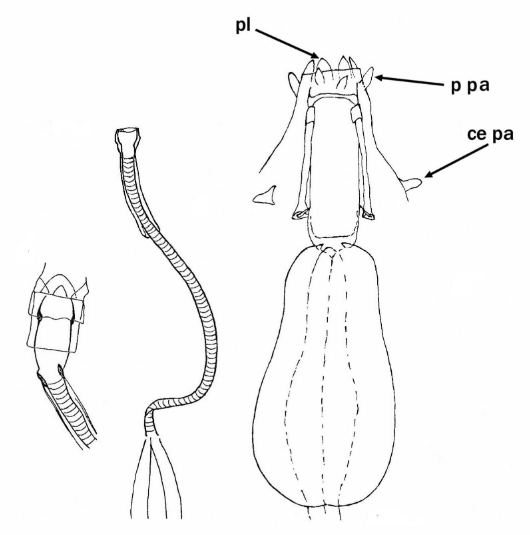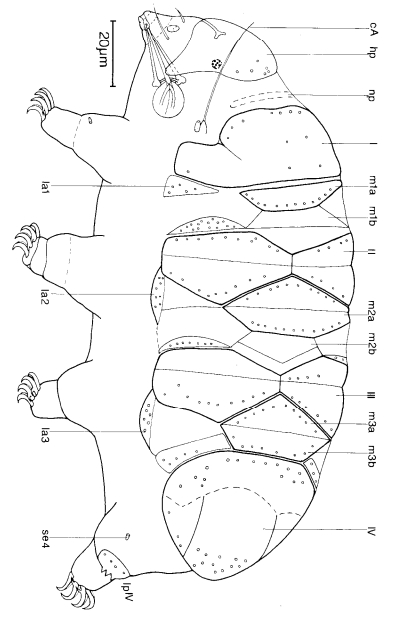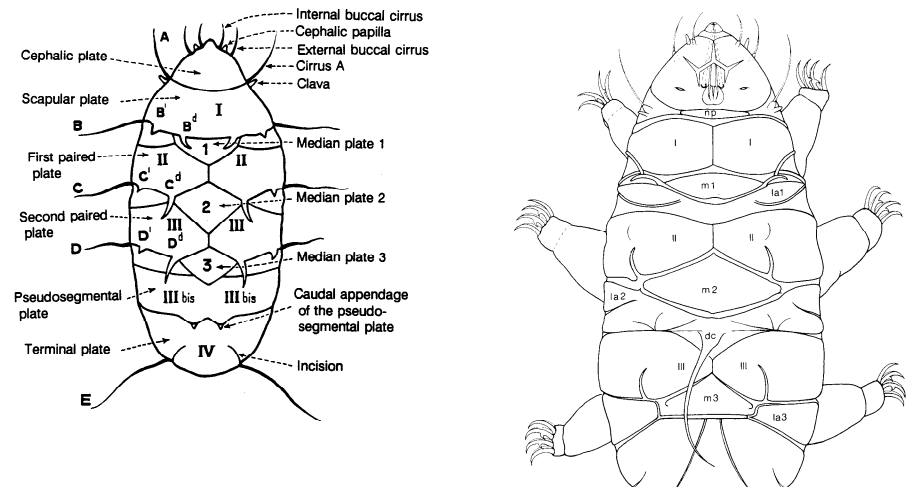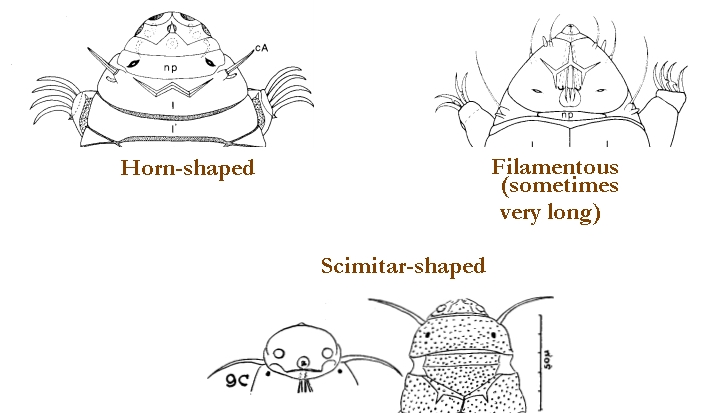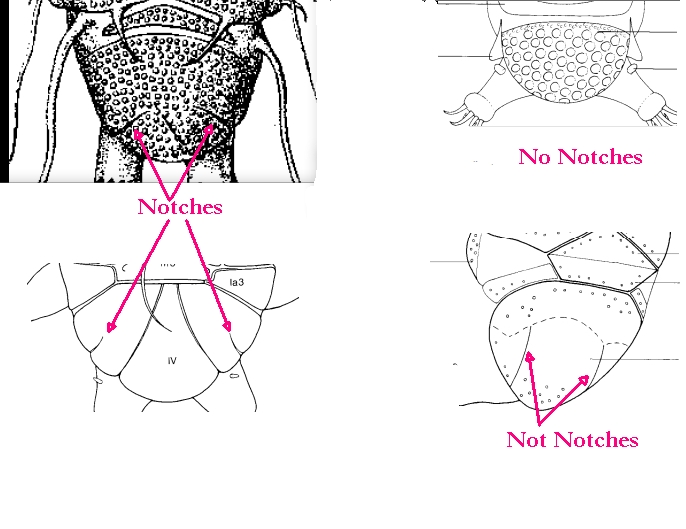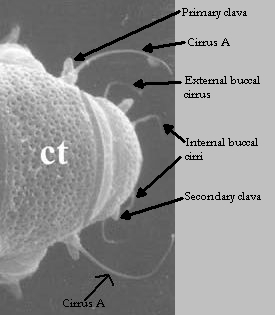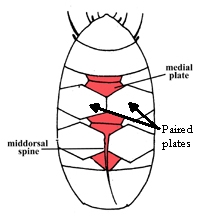Genus description from Dastych 2009: “Semiterrestrial, medium sized hypsibiids. Claw system of Hypsibius-type. The bases of external claws expanded posteriorly, each with a roundish, deep incision, the sides of the incision with a well formed tooth. Main branches of external claws thin and markedly long. At the base of each internal claw on legs I to III a distinct cuticular bar. Each bar with two unique, small and half-rounded plates close to each other. Buccopharyngeal apparatus similar to that of species of the Isohypsibius prosostomus-group. Mouth tube without strengthening bar. Pharynx with three macropiacoids and one microplacoid. […] The new genus can be distinguished from all other eutardigrade genera by the presence of peculiarly incised and oriented bases of ail external ciaws and the presence of unique small plates at each cuticular bar on legs I to III.
The claw system of Thalerius gen. nov. resembles most closely that of Ramajendas Pilato & Binda, 1990, a taxon reported from the (Sub-) Antarctic region. However, although the external claws in Ramajendas are quite similar to those of the new genus (see Pilato & Binda 1990) as far as the long flexible and thin main branch and the similar shape of the remaining part of the claw are concerned, they differ in having distinct lunules (particularly large on legs IV) and no incision at the claw base. The structures are differently formed in Thalerius gen. nov. Furthermore, Ramajendas has no plates at the cuticular bars on legs I-III and no external incision between the base and secondary branch of external claws as in the new genus. Further, the internal ciaws in Ramajendas are of the Isohypsibius-type (Pilato & Binda, I. c.), those in Thalerius gen. nov. resemble more the Hypsibius-type.”
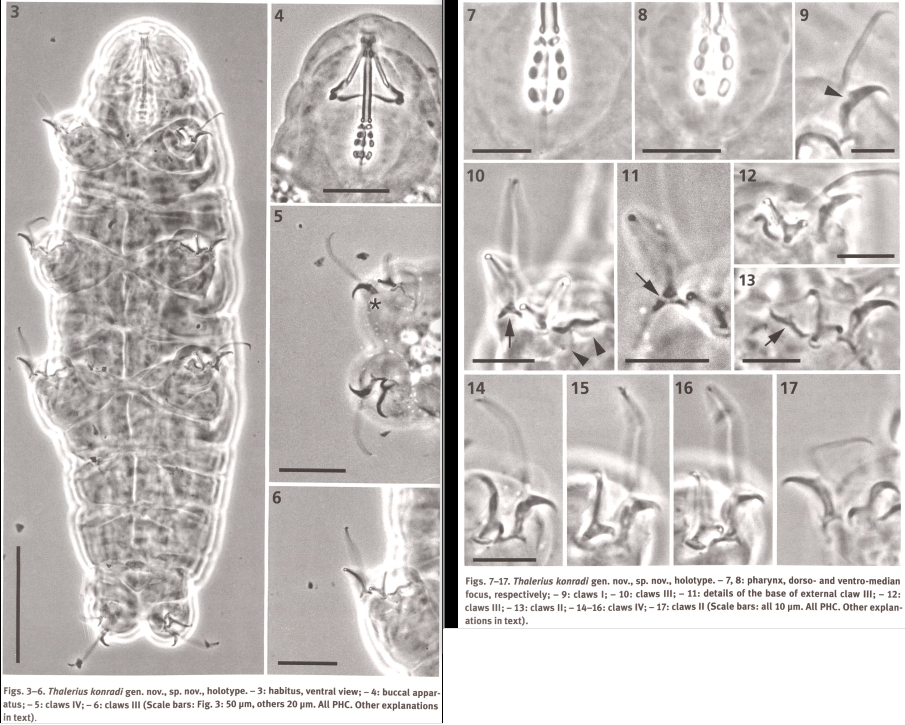
Citations:
Dastych H. 2009. Thalerius konradi gen. nov., sp. nov., a new tardigrade from the periglacial area of the Ötztal Alps, Austria (Tardigrada). Contributions to Natural History. 12: 391-402.
